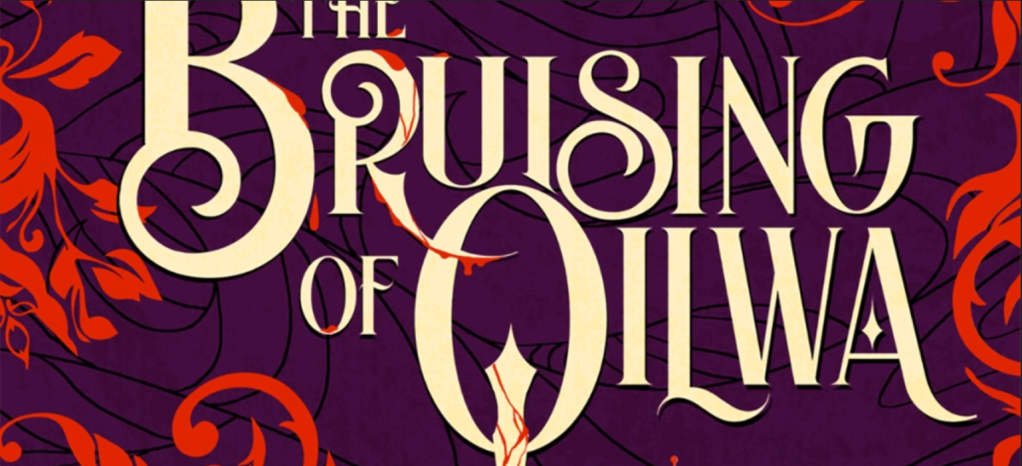“Migrants flood the city, an outbreak of disease happens, and what do we do? Bar the gates and hoard resources for ourselves, let people die in the streets instead of granting them a dignified passing. By those who call themselves learned people, no less.” — Kofi-khan from Naseem Jamnia’s The Bruising of Qilwa
What happens when a poor migrant working in a health clinic discovers a peculiar and deadly mutation of the plague that’s been ravaging their city? Oh, and this poor migrant worker also happens to be part of a persecuted clan of magic blood users, so they can’t even reveal how they discovered this disease mutation.
As you can see the stakes are high for Firuz-e Jafari in The Bruising of Qilwa by Naseem Jamnia, a fantasy novella that tackles some of the biggest issues of today’s world.
Ever since reading A Dead Djinn in Cairo, I’ve been looking for other non-Western-based fantasy stories that scratch the same itch that I didn’t even know I had. Deeply historically based. A lived-in world. Queer characters written robustly. Different religious backgrounds. And this book did that for me. To some extent, but we’ll get to that.
The World of the story
Jamnia based the worldbuilding for the story on the history of Persia, and being Persian-American themselves, the love and care they put into the narrative are palpable. Not just in the naming of places and people, but also in smaller things like the food, official forms of address, and the reality-inspired frustrations the characters face in their daily lives.
What’s life like as a migrant in a city where your people are despised? Firuz is a Sassanian blood magic practitioner—their people are being slaughtered due to prejudice and misguided beliefs. So, they’re fleeing in droves from their homeland of Dilmun to the Free Democratic City-State of Qilwa. The Sassanians are hated both at home and abroad, doubly persecuted by other Dilmunis and Qilwans alike and so, have to keep their powers hidden.
Firuz, along with their brother and mother are treated like less than human. In fact, it’s considered a stroke of luck that Firuz got a job as good as they did working at a free health clinic under Kofi, who founded the clinic and is sympathetic to refugees.
These themes of the migrant plight are so beautifully and carefully rendered and truly highlight the bittersweet tug of war between being glad to be in a better land with a better future while also missing home.
Template for Queer Fantasy
But the thing that stands out about this story is how in-built the queerness is.
The advantage of having a fantasy world is that anything goes. But this is not just an opportunity to have dragons and magic and elves; Jamnia shows the true potential fantasy writers actually wield.
A good chunk of the cast is queer. Firuz is non-binary and asexual, their brother is trans, and there’s a random mention of, “One of your mothers should be able to help you,” referring to a minor character. These sprinkles of queerness are passed along as if it’s normal—because it is normal and such intentionality is hard to find done satisfactorily in fiction today.
The mainstream has become too used to using queerness as the plot instead of just as an addition to the story. You know the usual ‘this character is gay and the entire plot is them being accepted/overcoming a bully’ type of story. That’s great but we need more nuance, and Jamnia delivers.
The plot has nothing to do with any sort of queer struggle. The story is more of a mystery than anything else. But along the way the queer characters have been weaved in so naturally in a way that we can only hope will reflect our reality at some point. And that’s why such narratives are important. They give us something to strive for.
The Only Set Back…
Unfortunately for me, the novella was not as much of a page-turner and I got through it mainly because it was beautifully written. I missed the heart-pounding, can’t-sleep-till-I’m-done feeling that a mystery should evoke. Even the twist at the end, though unexpected to me, just fell a little bit flat.
However, it’s just 176 pages so, I’d still recommend it because it’s a 5-star read on every other front.
I mean, there are so many turns of phrase that enthralled me with how well the culture was portrayed in a show-don’t-tell kind of way like, “Fed two birds with one loaf,” rather than the usual “killed two birds with one stone.” It’s so neat when authors pull off that extra touch of familiarity in how their worlds work.
Let us know what you think of it when and if you do read it and share other well-written queernormative works in the comments below or through our social media!


Leave a comment